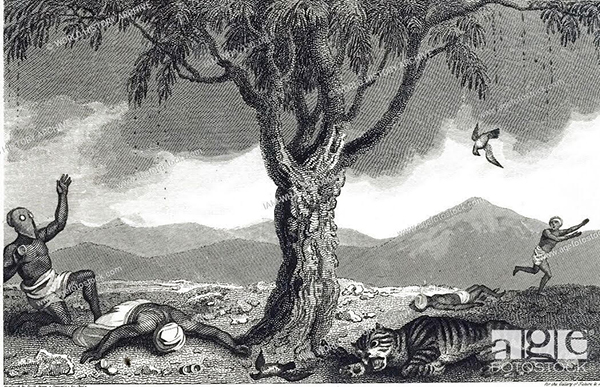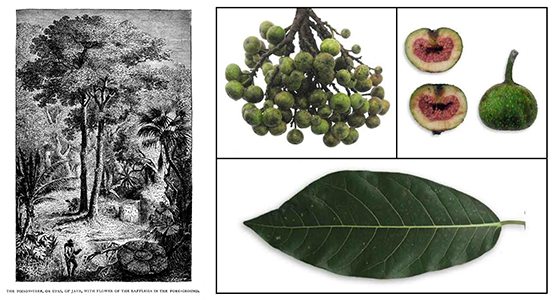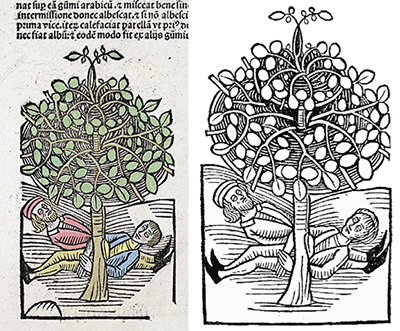 |
(1) 작년에 졸던 전두환
조는 모습을 제가 봤는데요. 그 모습 보고 저는 정말 분통이 터지는 것을 가눌 수가 없었는데 재판에 대한 어느 정도로 불성실한가를 볼 수 있었고요. 그다음에 도대체 이 사람의 생각은 내면은 무엇일까라고 하는 그런 사람으로서 굉장히 좀 끔찍한 그런 느낌까지 들 정도였어요. (조진태 5.18기념재단 상임이사 인터뷰, CBS 2019-03-11)
(2) 죽지도 않고 또 조네
1년여 만에 광주지법에 출석한 전두환씨(89)가 재판중에 또 조는 모습을 보이는 등 불성실한 태도로 일관했다. 전씨는 27일 오후 2시부터 진행된 고(故) 조비오 신부에 대한 사자명예훼손 혐의 재판에서 여러차례 눈을 감았다 떴다를 반복하다 결국 졸음을 참지 못한 듯 고개를 떨궜다. (뉴스1, 2020.04.27.)
(3) 종당엔 죽는다
전두환은 왜 자꾸 법정에서 조는 걸까. 조는 척하는 걸까. 왜 저렇게 뻔뻔할까. 사실은 분노할 필요가 없다. 전두환의 졸음은 ‘죽는 연습’일 뿐이다.
이건 비밀이지만, 법정 보이지 않는 곳에 ‘죄인을 응징하는 나무’가 있었다. 전두환이 앉아있던 자리 바로 위에 ‘죄인을 응징하는 나무’가 있었다.
죄지은 자가 ‘죄인을 응징하는 나무’ 밑에 있으면 졸음이 찾아오고, 종당엔 죽는다. 그러니 전두환이 존다 해도 슬퍼하거나 노하지 말라. 근데 졸기는 존나 존다.
 |
(부록)
응징하는 나무
Bohan Upas. 독을 내뿜는데, 수 마일 떨어져 있는 동식물의 생명을 위협할 정도로 강력. If someone happened to fall asleep under the shade of the tree, they would never wake up again. instantly killed plants and animals that were even miles away from it.
죄인 처형
옛날 말레이 사람들이 실제 이 나무로 죄인을.... At the time, Malaysians began to execute prisoners by tying them to the trunk of the great tree, putting them to eternal sleep.
어떤 독?
The Bohan Upas was said to have released narcotic, toxic, and certainly lethal fumes.
서식지
자바 등 섬지역. on the islands near Java in Southeast Asia.
자바어 한 마디
Upas, from the Javanese word for "poison". Bohun Upas = the Tree of Poisons.
 |
심화학습
(1) The first voyagers to Malay returned with grisly tales of a poisonous tree growing on the islands near Cathay, which was called the Bohun Upas--the tree of poisons. To the medieval traveler this tree was to be shunned, as it produced narcotic and toxic fumes which killed plants and animals for miles around. If one were to fall asleep in the shade of this tree, he would never awaken. Malaysians supposedly executed prisoners by tying them to the trunk of this great tree. By the 15th c. the tales of this tree had grown fantastic, and highly stylized drawings of the Bohun Upas were in some of the first printed books. The legend itself was probably based on the Bausor Tree (Antiaris toxicaria), which produces a poisonous latex used by natives on arrow tips.
 |
| The Bohun Upas - Tree of Poisons (1491, Germany, Woodblock illustration) |
(2) Bausor tree, 'Hortus Sanitatis' (1491). Woodblock illustration from Ortus (Hortus) Sanitatis, translated from the Latin as 'Garden of Health'. It may have been inspired by the known effect of plant opium extracts. The Hortus was the first printed natural history encyclopaedia and was published by Jacob Meydenbach in Mainz, Germany in 1491. He describes plants and animals (both real and mythical) together with minerals and various trades, with their medicinal value and method of preparation.
(3) The Bausor Tree (Antiaris toxicaria), which yields a poisonous latex still used by natives today on arrow tips.
(4) The legend was likely based on the Bausor Tree (Antiaris toxicaria), whose poisonous sap was used by natives to coat arrows. Antiaris toxicaria is notorious as a toxin for arrows, darts, and blowdarts.
관리자 freemediaf@gmail.com
<저작권자 © 자유언론실천재단, 무단 전재 및 재배포 금지>

